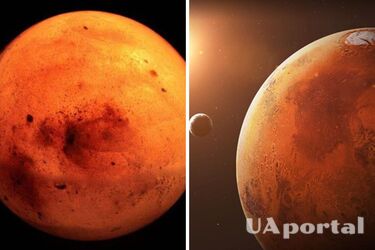Why Mars is called the "red planet": scientists have come to an unexpected conclusion

Mars is known as the "red planet," and almost everyone knows this, even without deep knowledge of space topics. However, a new study is changing the way scientists think about the causes of this characteristic color.
Moreover, it may indicate that in the past, Mars was much wetter and possibly even more habitable, Forbes writes .
Why is Mars red?
The surface of Mars is covered with iron oxide dust, which has been carried by winds for billions of years. However, it has remained unclear whether this "rusty" coating was formed in wet or dry conditions.
Thanks to data from Martian orbiters and laboratory experiments, scientists have found out that ferrihydrite, an aqueous iron oxide, is responsible for the planet's red hue.
Previously, it was believed that the main component of "Martian rust" was hematite, a mineral that forms in an arid environment.
What does it mean?
This discovery brings scientists closer to unraveling Mars' water past and the question of whether life could have existed on it.
Ferrihydrite is usually formed in water, which suggests that Mars was "rusted" at a time when there was still water on its surface.
"Our study shows that Mars began to acquire its red color much earlier than we had assumed," explains Adomas Valantanas, a researcher at Brown University (USA).
The researchers also found that ferrihydrite in combination with basalt, a volcanic rock, best matches the composition of Martian minerals.
"Mars remains the Red Planet. We just now have a better understanding of why," Valantanas adds.
These results cast doubt on previous assumptions that the surface of Mars remained dry for billions of years.
If you want to get the latest news about the war and events in Ukraine, subscribe to our Telegram channel!
